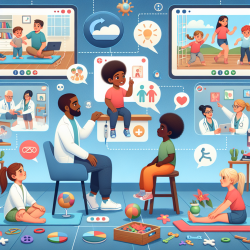In the wake of the COVID-19 pandemic, telehealth has emerged as a vital tool in the realm of pediatric allied health. The study titled Clinicians Decision-Making Regarding Telehealth Services: Focus Group Study in Pediatric Allied Health offers valuable insights into how clinicians decide when to use telehealth versus in-person services. Here's how you can leverage these findings to improve your practice.
Key Factors in Decision-Making
According to the study, decision-making around telehealth is multifaceted and involves several key factors:
- Technology: The type of hardware and internet connectivity available to both the client and clinician are crucial. For example, speech-language pathology sessions often require a laptop or full-sized tablet, while counseling can be conducted via a phone.
- Client and Family Considerations: Factors such as the client's age, attention span, and the family's socioeconomic status play a significant role. Telehealth is generally more suitable for school-aged children and adults, but not for very young children.
- Clinical Services: The type of intervention required also matters. Telehealth is suitable for some services like stuttering and language therapy in speech-language pathology, but not for others like speech sound disorders.
- Clinician Factors: Clinician confidence and motivation to use telehealth are pivotal. Having a "telehealth champion" in your team can make a significant difference.
Flexible Use of Telehealth
The study found that telehealth is best used flexibly, adapting to the needs of individual clients. Clinicians often use a hybrid model, combining telehealth and in-person sessions within a single treatment block. This flexibility allows for better engagement and trust-building with clients.
Telehealth Can Be Superior
In some cases, telehealth can offer advantages over in-person sessions. For example, it allows clinicians to observe clients in their natural home environment, which can provide richer insights into their behaviors and interactions. It also enables both parents to participate in sessions, which is particularly beneficial for counseling services.
Challenges and Concerns
Despite its benefits, clinicians expressed concerns that telehealth might fully replace in-person services in the future. They emphasized that certain elements of clinical care, such as body language observation and hands-on activities, cannot be replicated online.
Conclusion
Telehealth offers a valuable tool for pediatric allied health services, but it is not a one-size-fits-all solution. Clinicians need to consider a variety of factors to determine its suitability for each client. By understanding these factors, you can make more informed decisions and provide better care for your clients.
To read the original research paper, please follow this link: Clinicians Decision-Making Regarding Telehealth Services: Focus Group Study in Pediatric Allied Health










